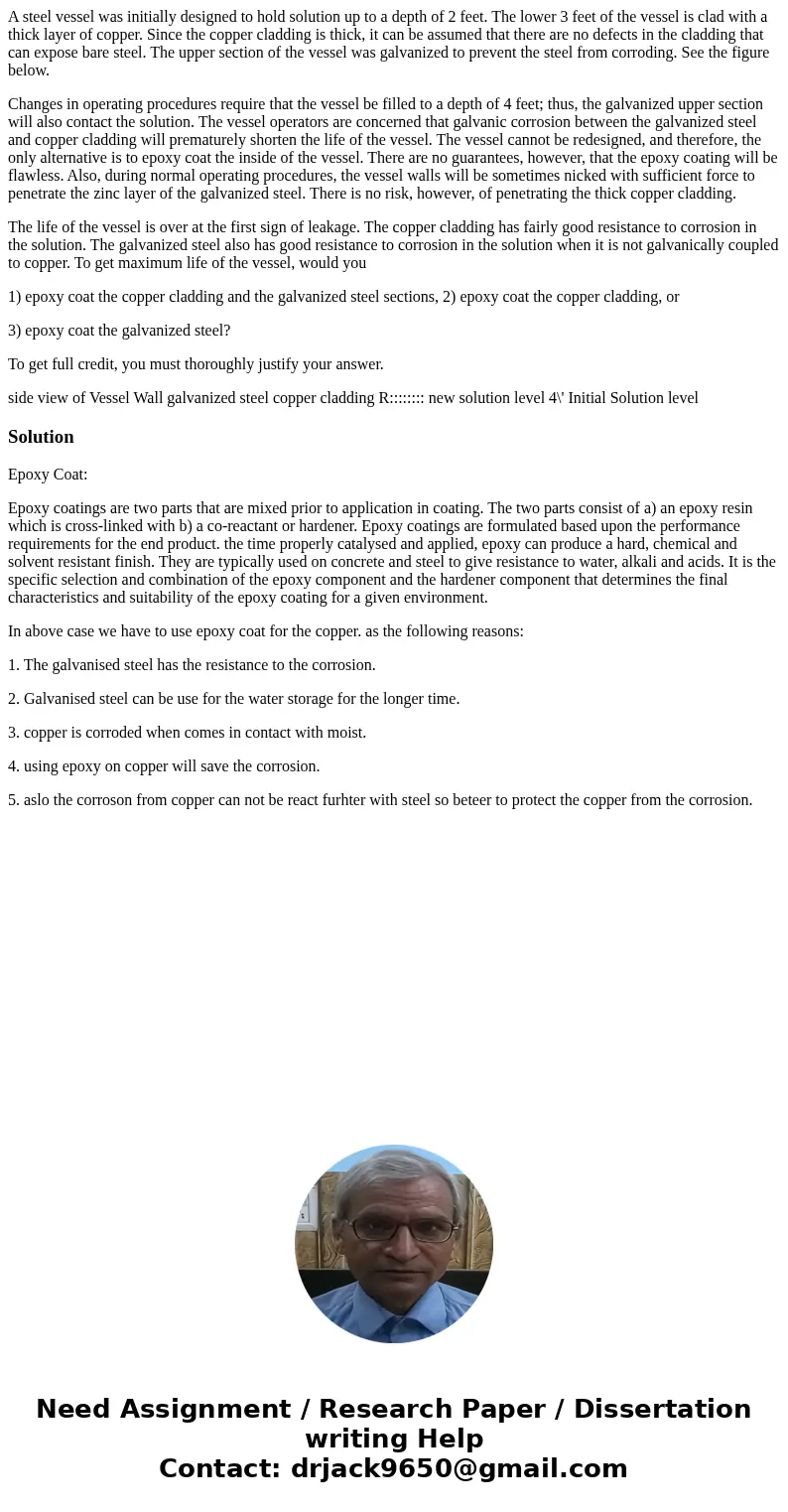A steel vessel was initially designed to hold solution up to
A steel vessel was initially designed to hold solution up to a depth of 2 feet. The lower 3 feet of the vessel is clad with a thick layer of copper. Since the copper cladding is thick, it can be assumed that there are no defects in the cladding that can expose bare steel. The upper section of the vessel was galvanized to prevent the steel from corroding. See the figure below.
Changes in operating procedures require that the vessel be filled to a depth of 4 feet; thus, the galvanized upper section will also contact the solution. The vessel operators are concerned that galvanic corrosion between the galvanized steel and copper cladding will prematurely shorten the life of the vessel. The vessel cannot be redesigned, and therefore, the only alternative is to epoxy coat the inside of the vessel. There are no guarantees, however, that the epoxy coating will be flawless. Also, during normal operating procedures, the vessel walls will be sometimes nicked with sufficient force to penetrate the zinc layer of the galvanized steel. There is no risk, however, of penetrating the thick copper cladding.
The life of the vessel is over at the first sign of leakage. The copper cladding has fairly good resistance to corrosion in the solution. The galvanized steel also has good resistance to corrosion in the solution when it is not galvanically coupled to copper. To get maximum life of the vessel, would you
1) epoxy coat the copper cladding and the galvanized steel sections, 2) epoxy coat the copper cladding, or
3) epoxy coat the galvanized steel?
To get full credit, you must thoroughly justify your answer.
side view of Vessel Wall galvanized steel copper cladding R:::::::: new solution level 4\' Initial Solution levelSolution
Epoxy Coat:
Epoxy coatings are two parts that are mixed prior to application in coating. The two parts consist of a) an epoxy resin which is cross-linked with b) a co-reactant or hardener. Epoxy coatings are formulated based upon the performance requirements for the end product. the time properly catalysed and applied, epoxy can produce a hard, chemical and solvent resistant finish. They are typically used on concrete and steel to give resistance to water, alkali and acids. It is the specific selection and combination of the epoxy component and the hardener component that determines the final characteristics and suitability of the epoxy coating for a given environment.
In above case we have to use epoxy coat for the copper. as the following reasons:
1. The galvanised steel has the resistance to the corrosion.
2. Galvanised steel can be use for the water storage for the longer time.
3. copper is corroded when comes in contact with moist.
4. using epoxy on copper will save the corrosion.
5. aslo the corroson from copper can not be react furhter with steel so beteer to protect the copper from the corrosion.

 Homework Sourse
Homework Sourse